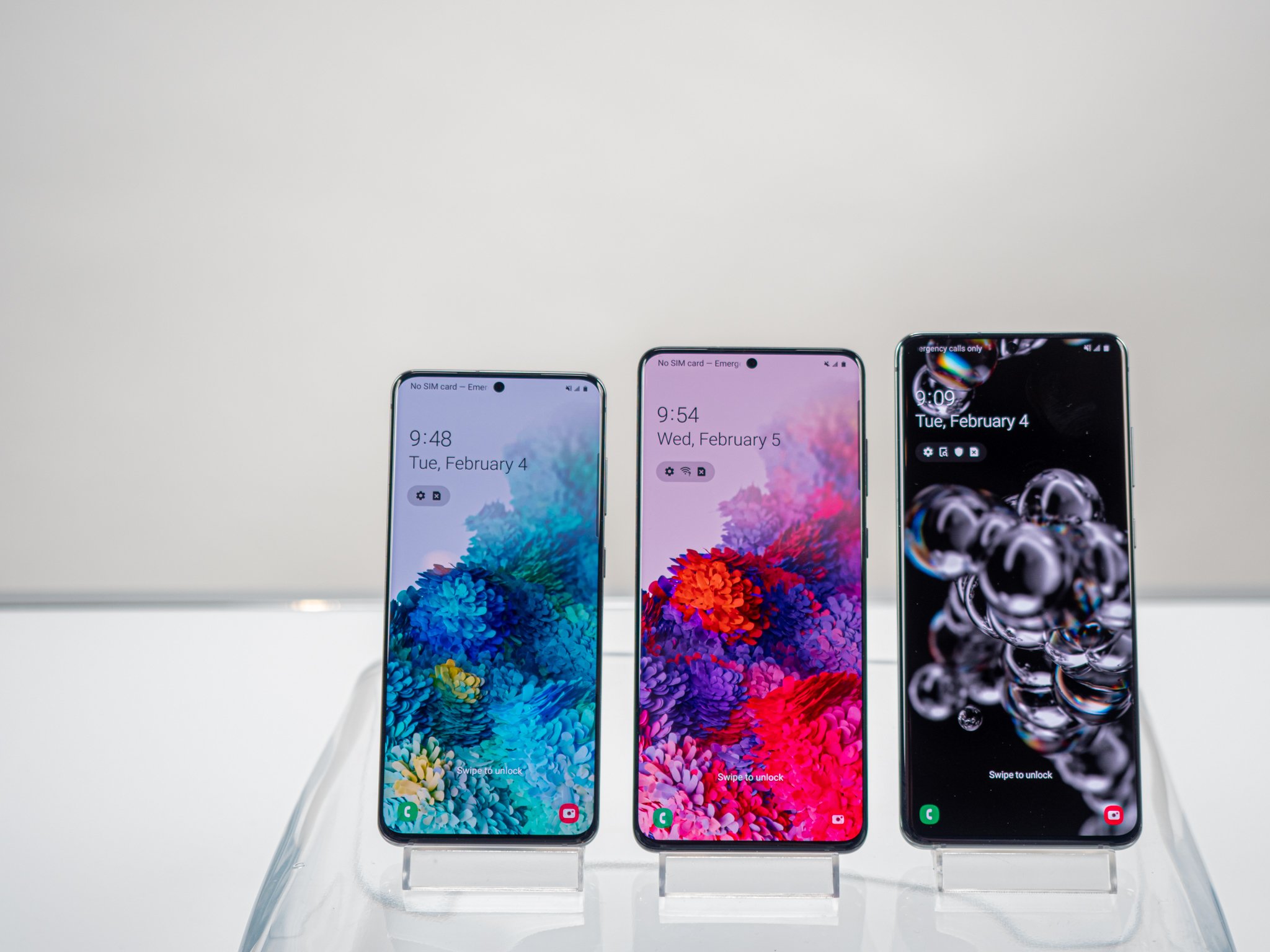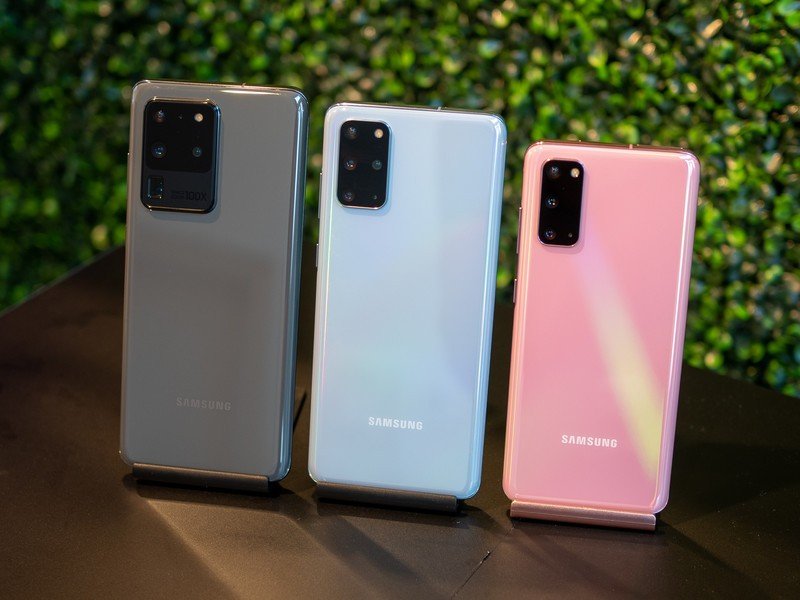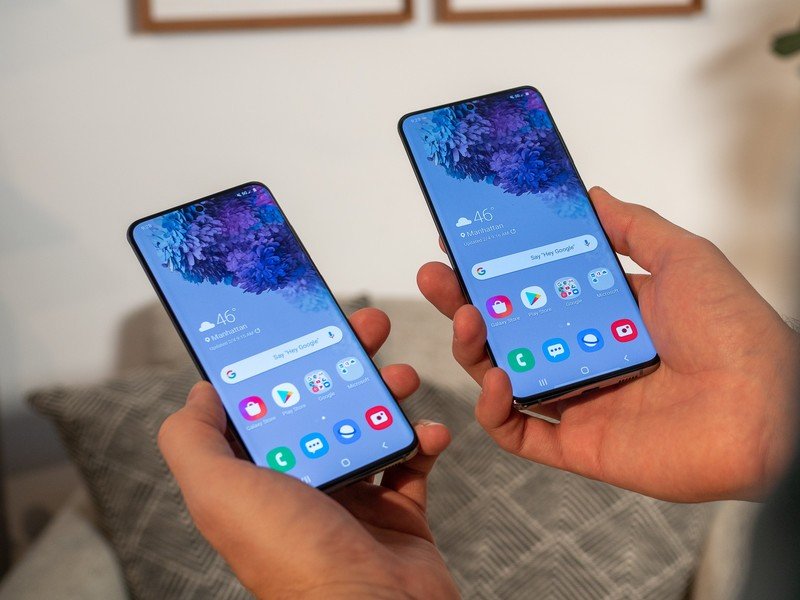Samsung's Galaxy S20 has a 120Hz display, Snapdragon 865, and costs $1000

What you need to know
- Samsung has officially announced the Galaxy S20, S20+, and S20 Ultra.
- All three phones feature 120Hz AMOLED displays and the Snapdragon 865 processor.
- Prices start at $1000, $1200, and $1400, respectively.
Following months of endless rumors and leaks, Samsung has finally taken the wraps off of the Galaxy S20 family. We've had a good idea of what to expect from the new phones for a while now, but in any case, here's a rundown of all the official info.
Similar to last year, Samsung is launching three phones as part of the S20 series — the regular S20, S20+, and S20 Ultra. There's no "budget" model like we had with the S10e, and while that's not ideal for people trying to keep costs low, it does help to keep the experience consistent across all three phones.
No matter which model you buy, all three versions of the S20 come with Samsung's first-ever 120Hz display. This is something we've been wanting for a while, and as with other high refresh rate panels, it makes everything on the S20 appear to be faster and more fluid compared to traditional 60Hz screens. Also shared across the three phones is Samsung's Dynamic AMOLED tech, Quad HD+ resolutions, and support for HDR10+.

Under the hood, the S20 lineup features the Qualcomm Snapdragon 865 processor, 12GB of RAM (up to 16GB on the S20 Ultra), 128GB of base internal storage, and Android 10 with One UI 2.0 right out of the box. Expandable storage up to 1TB is available on all models, which is a nice change compared to the Note 10's unexpandable design, but you won't find a 3.5mm headphone jack no matter which one you get.
All three phones have expandable storage, but the headphone jack is gone.
The rumor mill was really hyping up Samsung's camera improvements for the S20, and Samsung appears to have delivered. The S20 and S20+ still have a 12MP primary camera, but 30% larger pixels should allow for much better low-light performance. The telephoto lens is upgraded to 64MP with 3x lossless zoom, and you get 40% larger pixels with the 12MP ultra-wide camera.
We're more than happy with those upgrades as is, but where Samsung is really showing off its camera prowess is with the S20 Ultra. Here, you're getting a 108MP primary camera and a 48MP telephoto camera. While the megapixel count is lower than the S20 and S20+'s telephoto shooter, the design of the one in the S20 Ultra allows for 10x optic zooming and up to 100x digital zooming.

Another notable difference compared to the S10 series is that all versions of the S20 (at least in the United States) can connect to 5G networks. You are limited to sub-6 5G on the regular S20, but the S20+ and S20 Ultra support sub-6 and the more powerful mmWave standard.
Be an expert in 5 minutes
Get the latest news from Android Central, your trusted companion in the world of Android
No matter which S20 you buy, you're getting a huge battery.
5G networks have been known to require a lot of power, and to combat that, Samsung's equipped its new phones with big batteries. The Galaxy S20 gets a 4,000 mAh unit, the S20+ steps up to 4,500 mAh, and the S20 Ultra has a seriously massive 5,000 mAh battery.
These are high-end phones through and through, and as such, you'll pay a pretty penny for the privilege of owning them. The Galaxy S20 is the cheapest of the bunch at $1000, the S20+ starts at $1200, and the S20 Ultra is going for a cool starting price of $1400.
Pre-orders begin on February 21, and if you get the S20+ or S20 Ultra, Samsung is throwing in a pair of its new Galaxy Buds+.
Samsung Galaxy S20: Everything you need to know

120Hz display, 5G, and a big battery
The Galaxy S20 has arrived, and it's just as impressive as we were expecting. It features Samsung's first 120Hz display, the blazing-fast Snapdragon 865 processor, and a huge 4,000 mAh battery, There's also support for 5G and expandable storage, but you do have to give up the 3.5mm headphone jack.
Joe Maring was a Senior Editor for Android Central between 2017 and 2021. You can reach him on Twitter at @JoeMaring1.

